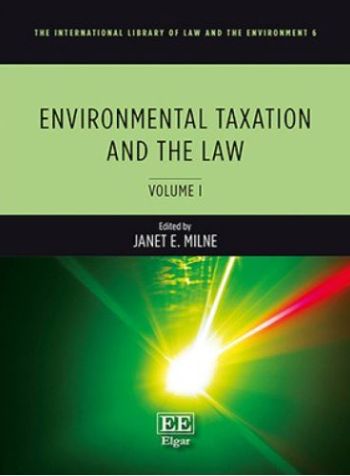
Economics shapes environmental pricing theory, but the law translates theory into reality.
This two-volume collection brings together carefully selected classic and cutting edge articles from around the world that delve into the legal design features of environmental tax instruments, how governments define the legal authority to use environmental taxation, the legal conundrums of border tax adjustments under WTO law and the place of environmental taxation among other environmental regimes.
Influential articles cover a wide range of environmental and legal issues that recur across continents, with carbon taxes and climate change taking centre stage as important case studies. Together with an original introduction by the editor, this timely compilation is an essential resource for those working in the field, whether they are trained in law, economics, political science, environmental science or public finance.